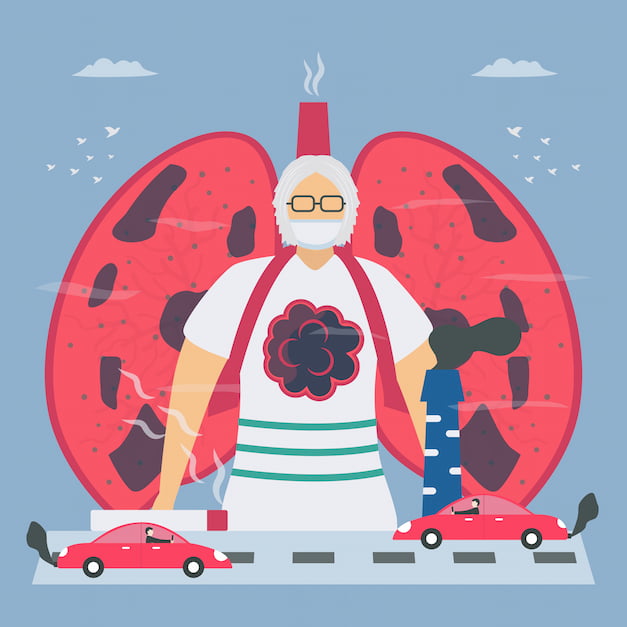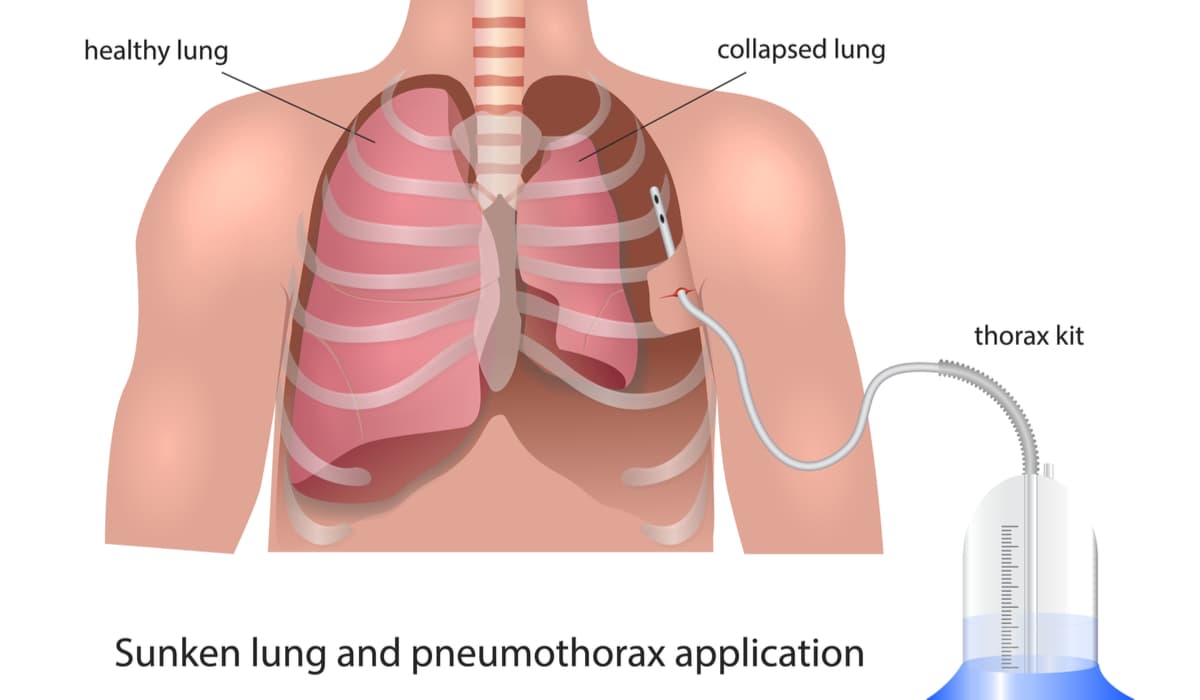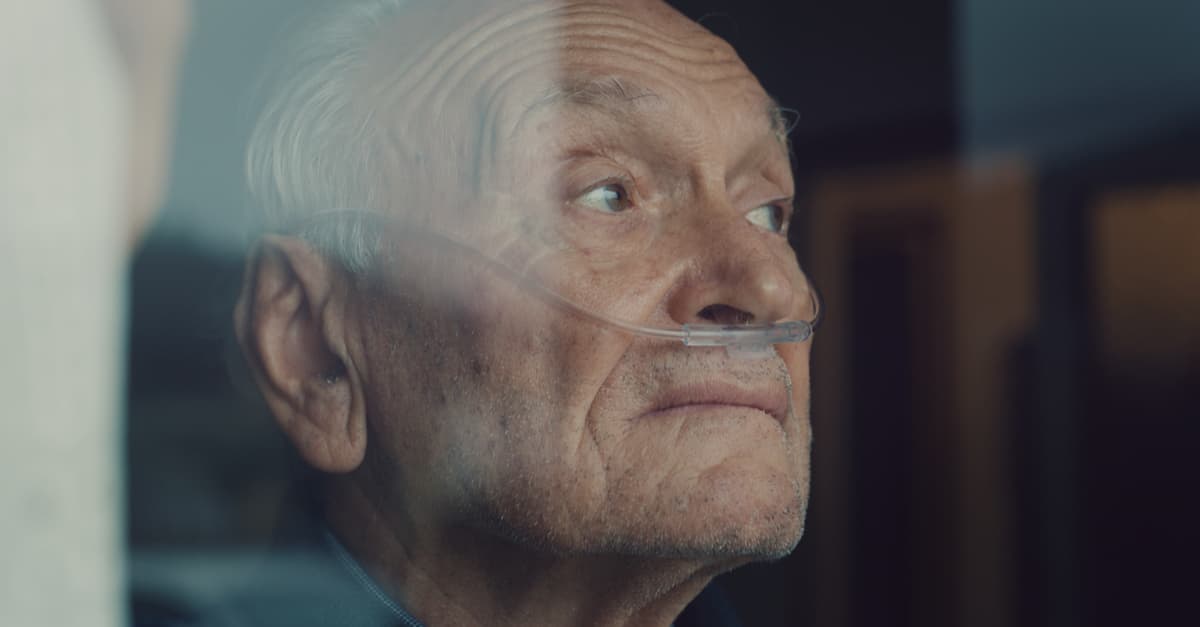Emphysema is a chronic disease characterized by the destruction of the farthest part of the respiratory tree, the alveoli, the place where oxygen passes into the blood. As a consequence of this destruction, the amount of oxygen in the blood is reduced, and respiratory distress (dyspnea) appears with exertion. When we breathe, the air comes through the bronchial tree to small sacs called alveoli, which are located at the end of the bronchial tubes and fill the lungs. From the lungs, oxygen is transported through the arteries to the different tissues and organs of the body. People with Emphysema have damaged alveoli: the inner walls of these sacs weaken and rupture, creating larger air spaces and thus reducing the air exchange surface of the lungs. Consequently, the amount of oxygen that reaches the blood decreases, and this can produce in the patient a sensation of shortness of breath, which is the frequent manifestation characteristic of this respiratory pathology.
Causes of Emphysema

The most common cause of pulmonary Emphysema is long-term exposure of the lungs to airborne irritants. The most common of which are nicotine and other chemicals contained in tobacco or marijuana smoke (also that exhaled by other smokers, although the risks of passive smoking are lower). High air pollution is another risk factor that can intervene in the appearance of this disease and the chemical vapors, fumes, and dust that exist in certain work environments. The use of charcoal and firewood in poorly ventilated places can also be another cause. Therefore, smoking or second-hand smoke, living in a city or area with a high level of pollution, working in environments with exposure to various gases, dust, and toxic fumes increases the risk of suffering from this disease. There is also a small percentage of genetic risk factors; rarely, Emphysema is caused by an inherited disorder in which the gene that regulates the synthesis of a protein called Alpha-1 Antitrypsin is damaged. This substance, present in lung cells, protects the alveoli wall, so its absence causes them to expand and increases the probability of Emphysema.
Symptoms

- It is characterized by a sensation of shortness of breath (dyspnea) that, over the years, appears with less effort. Characteristically, patients with Emphysema have a lower tolerance to exertion than patients with other forms of COPD, being able to feel reasonably well at rest and yet feel very fatigued when walking a few meters.
- Coughing and sputtering are much less common in patients with Emphysema than in those with other forms of COPD, such as patients with chronic bronchitis.
- Patients with Emphysema frequently and characteristically have many bullae in the lungs, a type of air pockets that, when expanding, compress the surrounding lung, worsening the symptoms. These bullae can also rupture spontaneously, producing a pneumothorax, a sudden collapse of the lung due to air entering into the pleural cavity. Pneumothorax is associated with chest pain and severe shortness of breath and requires urgent treatment, especially if it occurs in patients who already have very limited lung capacity.
- Patients with Emphysema are usually thin people, with a very prominent chest.
Treatment

Once the damage to the alveolus has occurred, it is irreversible, but you can try to prevent the Emphysema from progressing and relieve symptoms. In this sense, drug treatment is based, first of all, on the use of bronchodilators that mitigate coughs and air shortages since they relax the constricted airways. Likewise, the doctor can prescribe inhaled corticosteroids, capable of reducing inflammation and also alleviating shortness of breath. Finally, if there is a bacterial infection, it will be necessary to resort to antibiotics. It will be necessary to be adequately vaccinated against the flu and the germs that cause pneumonia (pneumococcus) since these patients are at higher risk of suffering complications from these diseases. In some Alpha-1 Antitrypsin deficiency cases, replacement therapy with purified Alpha-1 Antitrypsin is recommended because of its effect in slowing the loss of lung density.
In some of the most severe cases, when the pathology has already advanced, it may be necessary to resort to oxygen cylinders, with which the patient will breathe through a mask when they are at home or even 24 hours a day. Also, in the most severe cases, surgery may be necessary to reduce the lung volume through an operation in which the damaged tissue is removed. Occasionally, the patient may even require a transplant of this organ. In parallel, a pulmonary rehabilitation program is recommended, in which exercises and techniques are learned and practiced that help to breathe better. This therapy may include nutritional counseling, regular exercise (capable of increasing lung capacity), and psychological counseling.
Prevention
The best prevention of pulmonary Emphysema is not to smoke and to avoid second-hand smoke; that is, to avoid breathing the smoke of another smoker. It is also advisable to use a mask if you work in contact with dust or chemical fumes. There are also other tips such as:
- Stop Smoking: It is the best measure to prevent Emphysema and the only one that can stop the growth of Emphysema. Also, avoid being a passive smoker to prevent major problems.
- Avoid Other Respiratory Irritants: Change oven filters and air conditioning filters to maintain a hygienic environment. Avoid perfumes, kitchen odors, exhaust fumes, paint, candles, etc.
- Exercise: Physical workout can increase lung health.
- Protect Yourself From Cold Air: Cold air causes spasms in the bronchial tubes, making it difficult to breathe. Use a scarf to protect the nose and mouth to warm the air being inhaled by the person.
- Avoid Respiratory Infections: Get vaccinated against pneumonia and the flu. Avoiding contact with people with colds or flu is also an excellent preventive measure.
